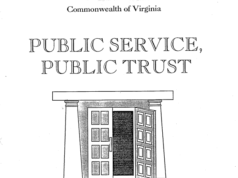 Last Friday I traced the route Hannah Graham took to the place she was discovered, curious to know, among other things, how long the drive had taken. I also wondered if a former residence of Matthew’s along the route that hadn’t been mentioned in the news had been searched.
Last Friday I traced the route Hannah Graham took to the place she was discovered, curious to know, among other things, how long the drive had taken. I also wondered if a former residence of Matthew’s along the route that hadn’t been mentioned in the news had been searched.
My interest in any of this is part of a broader curiosity about the relationship between power and behavior that began with an attempt to better understand how sexual harassment, abuse, assault, and rape should be approached by the military leadership. I am certain that the initiatives taken to curb these issues in the military are aimed at the wrong targets and will falter. But I digress. October has been National Bullying Prevention Month. There was an eye-opening, at least for me, and gut wrenching series of presentations at the Charlottesville Shelter for Help in Emergency. And though Hannah Graham was not a known acquaintance of her alleged assailant, the motivations and social skills of this sort of assailant are strikingly similar. It is really their signatures that distinguish them. They are rarely insane, by the way.
Though I am not a psychiatrist or sociologist, I am going to dare to discuss the social pathology involved in behaviors that probably should not always be stove piped into various categories like bullying, domestic abuse, intimate partner abuse, elder abuse, child abuse, hazing, rape, murder, etc. You may recall that when Hannah Graham went missing, I suggested that she would not have been her assailant’s only victim. What I have come to recognize through a lot of study recommended by old friends who are experts is that these are varying manifestations of power and most of those who wield power in those ways do not perceptibly look or act differently from you or I unless they are among peers or bystanders under their influence. Their “success” is shaped by knowing what others perceive as right or wrong and only acting wrong in the presence of their victims or reliable bystanders. Often they count on their victims’ and any witnesses’ shame to provide leverage that avoids consequences for their actions.
So, before I go below the fold, I want to repeat what I know is easier for me to say than for others to do: if you are or know a victim of any of these trespasses, report, report, report…do not stand by, get help; help others.
What I realized last Friday was that even a casual look at any case like Graham’s reveals information that becomes chaotic in its abundance. Not every lead can be followed. They have to be racked and stacked so that what may be most promising is followed first; simply a resource constraint. I was going to participate in the search effort on the Saturday after Hannah was found. Because the searches were suspended, I had not been to the site. I also was curious about the apartment complex where Matthew had lived that is along the same route that takes one past his parents’ residence (where he had grown up) to the park where there is a lake where he may have fished. It is reasonable to assume he knew the entire route well.
There were no signs that any search had been conducted at the apartment complex or around the adjacent storm drainage pond and the steep terrain abutting I-64. Coincidently there was a cab parked in the parking lot. But a little something that caught my attention is that there is a Region X Community Services Board facility next to that complex. Again, this is where tangents begin to create distractions in any investigation. One might wonder if Alexis Murphy ever used Region X services in her hometown or even here where she worked on the opposite side of town. Would a sophisticated stalker identify potentially vulnerable victims at a facility like this? The video from the Charlottesville mall show Matthew stalking. I will return to stalking in a subsequent post.
Then I drove toward the location where Hannah was found. That drive from downtown Charlottesville takes a while. The street turns into a broad, divided four lane thorughfare, but quickly narrows just past his former residence after it becomes Old Lynchburg Road into a winding and hilly unmarked byway. There is even a four way stop at a crossroad just before approaching the location. Even in a hurry, it might take 25 minutes or more. She was either conscious and unafraid of her driver or unable to resist. In either case, whoever engaged her and provided transport had the social skills to trap her, gainning her confidence for some period of time. By the way, because she was found in the county, the jurisdiction for the murder is Albermarle County while the abduction’s is the city.
During a discussion with an Albemarle County Assistant Commonwealth’s Attorney this week, I was told that criminal investigators distinguish between serial offenders whose signature is rape and those who sign off with murder. Bear in mind that the final act is a flourish and not the driving motive. Both manifest violent power over their victims. It would appear that Jesse Matthew may test that distinction or may show how perpetrators’ behaviors can be shaped by “success” or “failure” to dominate without being held accountable. In this situation there were two alleged rapes where the victims were left alive and they reported. The attack in Fairfax appears to be his first attempt after transition from rapist to murderer. And it appears he learned even more from that attack about isolation.
Here is something most disturbing for me so far. In the Jesse Matthew story, two strong women did come forward and they were failed at both Liberty University and Christopher Newport University by being shamed. They were failed in much the same way that Sarah Butters was failed at James Madison University. And you realize where that kind of institutionalized failure may lead. It really provides a clearer indictment of leadership and culture in every one of those cases and schools.
What will follow over the next while are a number of stories about what I gleaned from the Shelter series. Where my curiosity has taken me isn’t pretty. I only hope I can do justice to the stories of power and abuse I will tell. At least one can’t be told in anything less than a book. But I also hope to convey during all of this the importance of legislation that is needed to change state code to protect at least some victims. Possibly along the way, there’ll be more.














![Monday News: Trump’s Lunacy Pushes China, Russia, India, etc. Together; “Happy Labor Day. Donald Trump and Elon Musk Are Screwing Workers.”; “Where is the [media’s] intense focus on Trump’s failing health?”; ““Trump says he is not a dictator. Isn’t he?”](https://bluevirginia.us/wp-content/uploads/2025/09/montage0901-100x75.jpg)